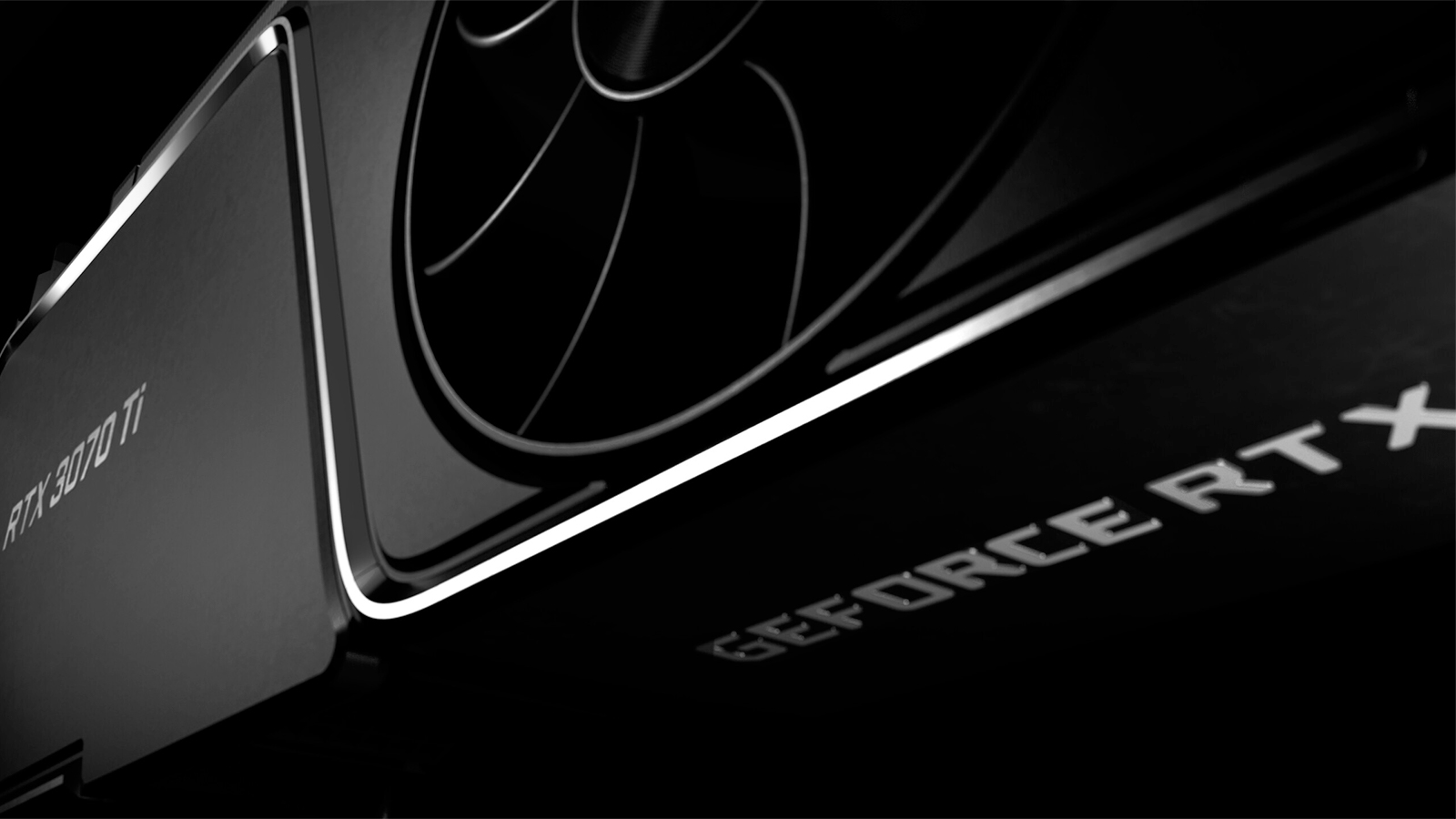Nvidia RTX 4070 GPU could be faster than RTX 3090 Ti
RTX 4070 graphics card may be a good deal more powerful than previously believed

Nvidia’s RTX 4070 graphics card may run with more CUDA Cores and video memory than the rumor mill previously believed, according to the latest from the GPU grapevine.
The source for this is well-known hardware leaker Kopite7kimi, who shared the revised speculation for the RTX 4070 via Twitter.
There is an update of RTX 4070. PG141-SKU3317680FP3212G 21Gbps GDDR6X300WTSE >11000August 4, 2022
So, the theory now – and this is still just a theoretical incarnation of the RTX 4070, of course, and we can’t be sure Nvidia has settled on this configuration – is that Team Green has decided to up the CUDA Core count to 7,680 (compared to the previously rumored 7,168).
That’s a fair jump, and there’s another upgrade supposedly applied in that the graphics card is set to use 12GB of VRAM (21Gbps GDDR6X), rather than the 10GB loadout which has been long rumored.
Kopite7kimi further asserts that the RTX 4070 will chug 300W in terms of power usage, a figure that actually hasn’t changed from the previous leakage we’ve been drawing comparisons with – good news in theory, seeing as the rumored specs are more powerful now.
Analysis: Time for AMD to start getting really worried?
The RTX 4070 will be a more affordable model than the higher-end Nvidia cards (4080 and 4090) which command the really big premiums, so to see it get a rumored boost in power, and a considerable one, is exciting news for the would-be buyers of the future. Although we’re very aware of the dangers of changes in rumored specs – they may not be right at all, as the leaker could’ve been misinformed. Furthermore, as Nvidia goes through the finalization of RTX 4000 GPU specs down the range, what might be true now may still change before release.
All of which is to say as usual with rumors, resist the urge to get carried away. But if this does turn out to be the final incarnation of the RTX 4070, then a lot of gamers will be breathing some serious sighs of relief simply at the 12GB VRAM configuration. As the graphics card being rumored to have just 10GB was one of the biggest sources of frustration and disappointment around the entire RTX 4000 range, from what we’ve seen (well, that and the obvious power usage worries, particularly towards the higher-end).
Get daily insight, inspiration and deals in your inbox
Sign up for breaking news, reviews, opinion, top tech deals, and more.
Regarding the VRAM issue, if you recall, the theorizing was that Nvidia was saving the 12GB loadout for the RTX 4070 Ti, and what seems to have happened now is that the company has basically turned the RTX 4070 into the 4070 Ti. Not just with that video memory being ramped up, but also with the CUDA Core count being extended to use the full amount of cores available on the AD104 GPU.
This could mean that the RTX 4070 is set to outpower the current RTX 3090 Ti flagship, because as Kopite7kimi tweets, the 3DMark TimeSpy Extreme score for the 4070 is now in excess of 11,000. As the leaker said about the RTX 4070 Ti, it could easily match the 3090 Ti, and now this is apparently the case for the vanilla RTX 4070 – except it doesn’t have a predicted power usage of 400W like the rumored 4070 Ti (it’s a far lower 300W, supposedly).
Don’t underestimate how pivotal a swing this could be for the power of the RTX 4070 then – and what a handful this graphics card might turn out to be for AMD to deal with – while also bearing in mind all the caveats we’ve already outlined.
There is also a further question, though: what can Nvidia do with the RTX 4070 Ti when it eventually emerges? By which we mean, if the RTX 4070 is using the full-fat version of the AD104 chip, then there’s nowhere really to go, so presumably Nvidia would then have to employ a cut-down AD103 for the 4070 Ti (that’s the GPU which powers the RTX 4080, or so the grapevine believes).
Via VideoCardz
Darren is a freelancer writing news and features for TechRadar (and occasionally T3) across a broad range of computing topics including CPUs, GPUs, various other hardware, VPNs, antivirus and more. He has written about tech for the best part of three decades, and writes books in his spare time (his debut novel - 'I Know What You Did Last Supper' - was published by Hachette UK in 2013).